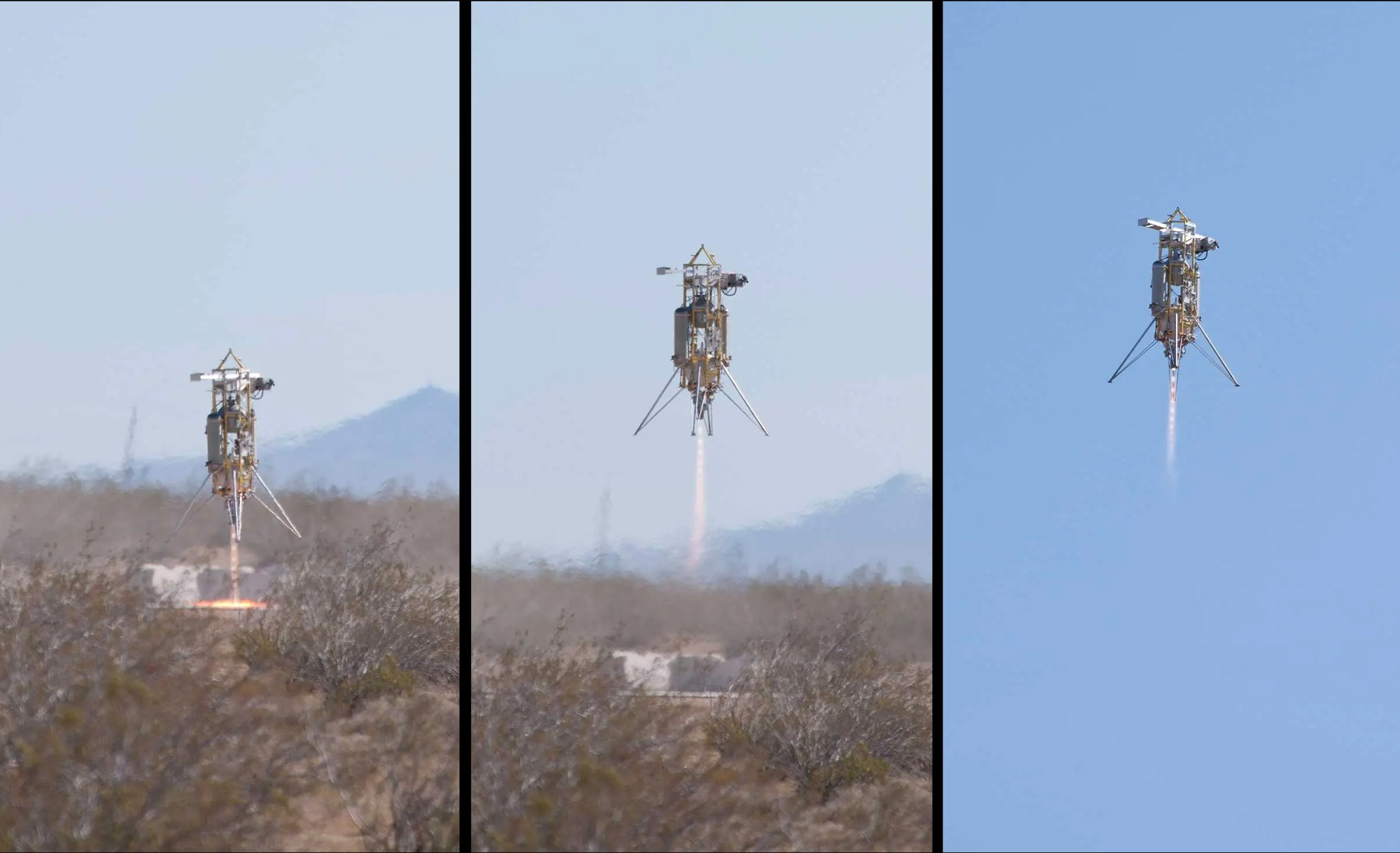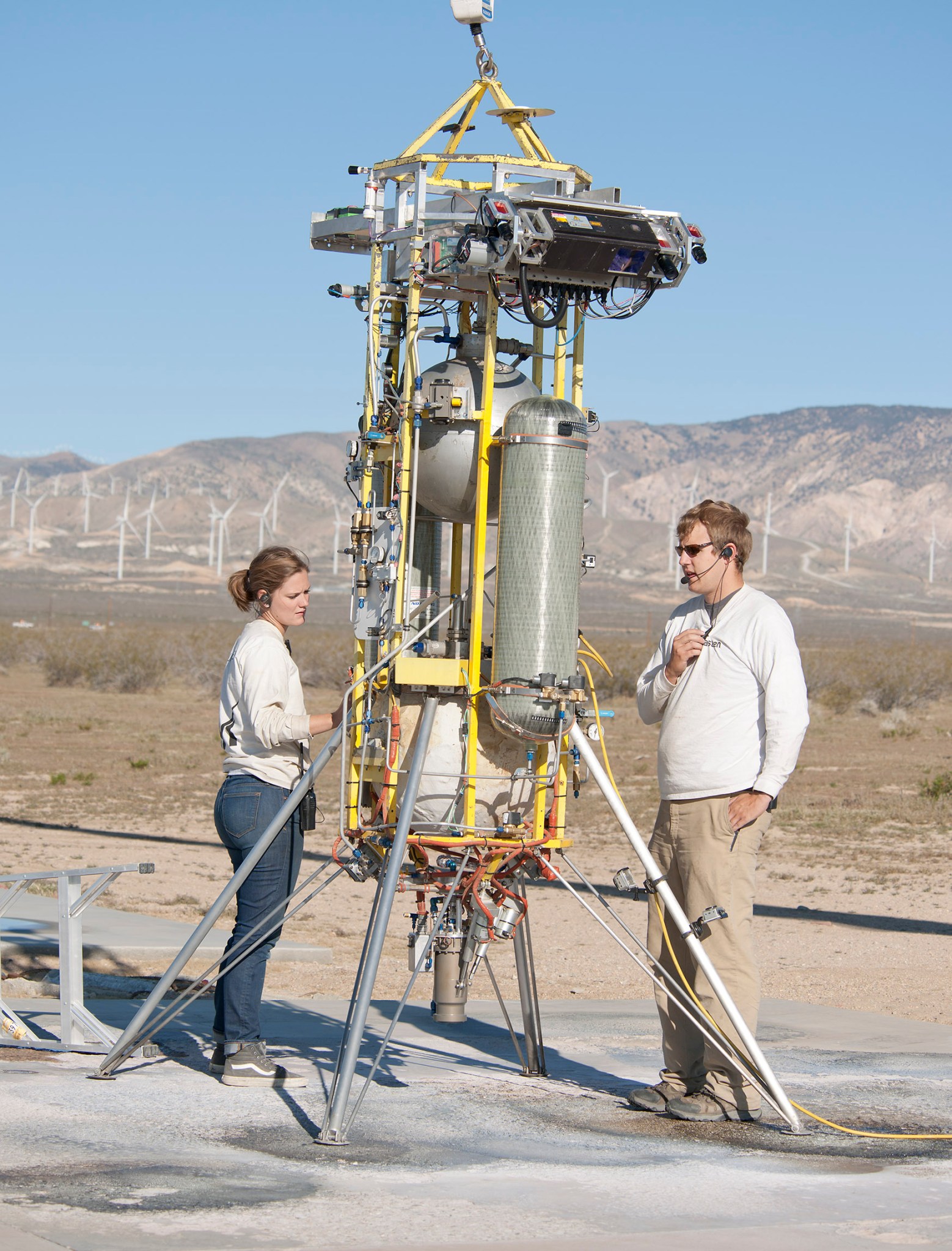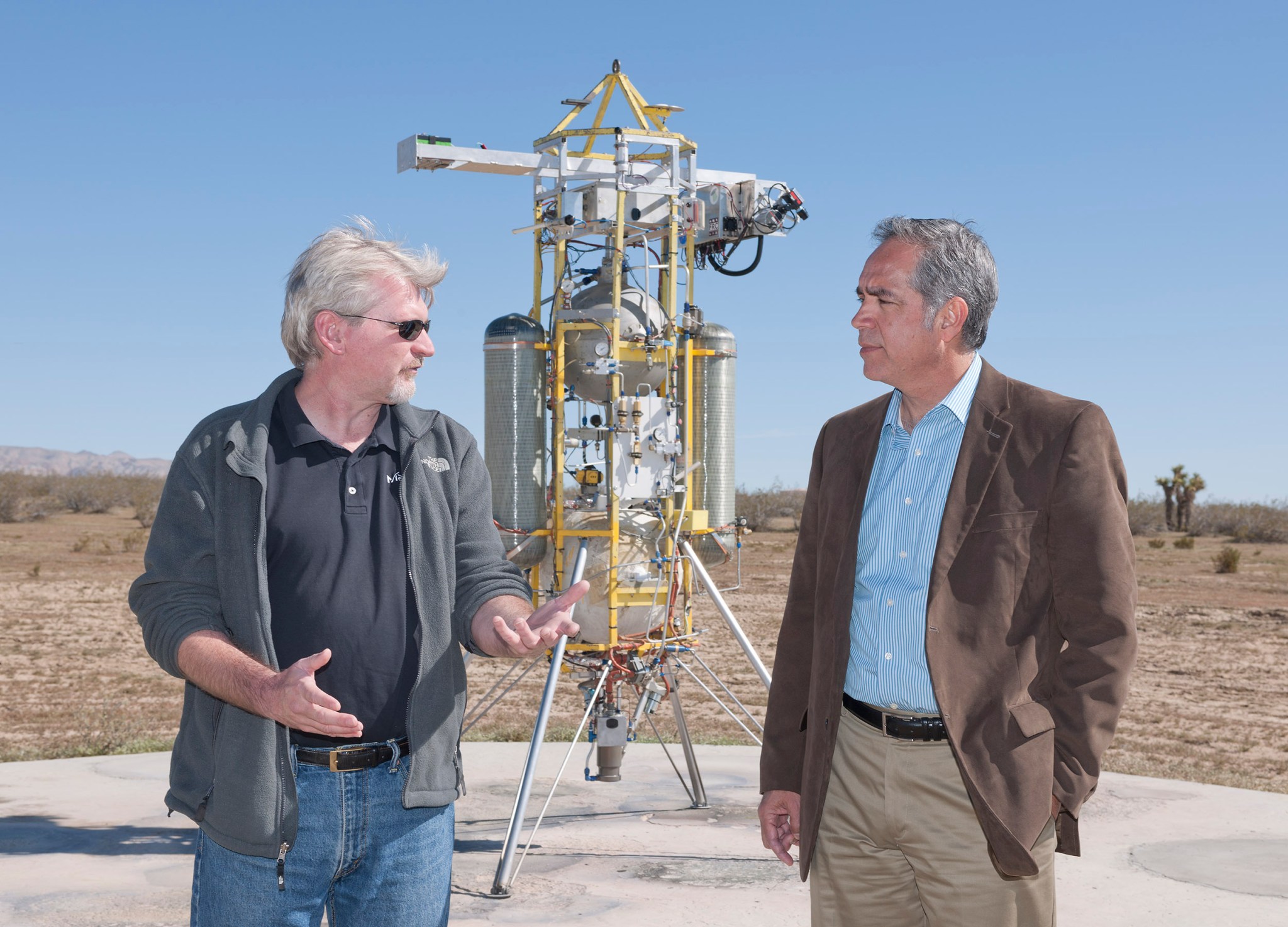Carnegie Mellon University (CMU) students developed a sensor package to analyze large pits in the surface of the moon or Mars that could lead to openings of caves. The package was launched recently on Masten Space Systems’ XA-0.1B Xombie suborbital technology demonstration rocket during a NASA-sponsored launch and landing at the Mojave Air and Space Port in Mojave, California.
The computer vision technology sensor package was mounted on top of Masten’s vertical-takeoff, vertical-landing rocket, named Xombie. The rocket ascended to about 111 meters or nearly 365 feet, traversed over a simulated hexagon pit then returned to its pad. The total flight time was 64 seconds.
“We are working with Carnegie Mellon students who are developing a technology to build maps and 3-D models of the features of the moon,” said Nathan O’Konek, Masten’s director of business operations. “Our lander test vehicles are able to simulate landing trajectories that a lander on the moon would actually follow; we descend at rates similar to what a lunar lander would follow at low altitudes. We fly their instrument and they take imagery of the terrain that validates that the instruments are going to be able to do the same thing on the moon.”
The sensor package is planned for a robotic lunar mission to explore a pit on the moon’s surface for a first close look at its geometry, geology, and origin to determine whether the pit is an entrance to a cave. These openings are thought to be lava tubes that possibly explain the moon’s volcanic past. The pits also hold potential for future explorers providing shelter from the extreme temperatures, meteorites and radiation on the moon.
“Fictional speculation of lunar pits and caves goes back more than a century,” said Red Whittaker, CMU professor and mentor. “The first three pits ever identified were images taken by the Japanese Kaguya spacecraft (launched in 2007). “Evidence that these pits could be lunar lava tubes was first recognized during the Apollo era.”
Whittaker added, “Although the potential to use caves for human protection was enticing, there was no known way of getting into the caves, or lava tubes. The LRO (NASA’s Lunar Reconnaissance Orbiter) spacecraft further provided some evidence that certain pits exhibited caverns or overhanging walls that might be an access into the lava tubes.”
Once the spacecraft arrives at the moon, it will fly over the pit using the computer vision sensor package to create a 3-D map of the depression. After the fly over, the craft would land and travel to the pit for further investigation by the CMU-developed robot named Andy.
NASA’s Undergraduate Student Instrument Project (USIP) funded the CMU instrumentation package development. USIP is an educational flight opportunity of the agency’s Science Mission Directorate, which helps universities develop and fly science payloads to be flown on suborbital vehicles. The Flight Opportunities Program of the Space Technology Mission Directorate funded the flight of the CMU sensors to fly on Masten Space Systems’ Xombie rocket
In NASA’s Flight Opportunities Program, officials have been working with commercial companies, universities and government organizations to coordinate testing of innovative space technologies on research flights through the use of commercial suborbital flight platforms.
The Flight Opportunities Program is managed at NASA’s Armstrong Flight Research Center at Edwards, California. NASA’s Ames Research Center at Moffett Field, California, manages the solicitation and selection of technologies to be tested and demonstrated on commercial flight vehicles. For more information on the Flight Opportunities program, visit: http://flightopportunities.nasa.gov.
NASA’s Space Technology Mission Directorate is innovating, developing, testing, and flying hardware for use in NASA’s future missions. Over the next 18 months, the directorate will make significant new investments that address several high priority challenges for achieving safe and affordable deep-space exploration. For more information about NASA’s investment in space technology, visit: https://www.nasa.gov/spacetech.

































